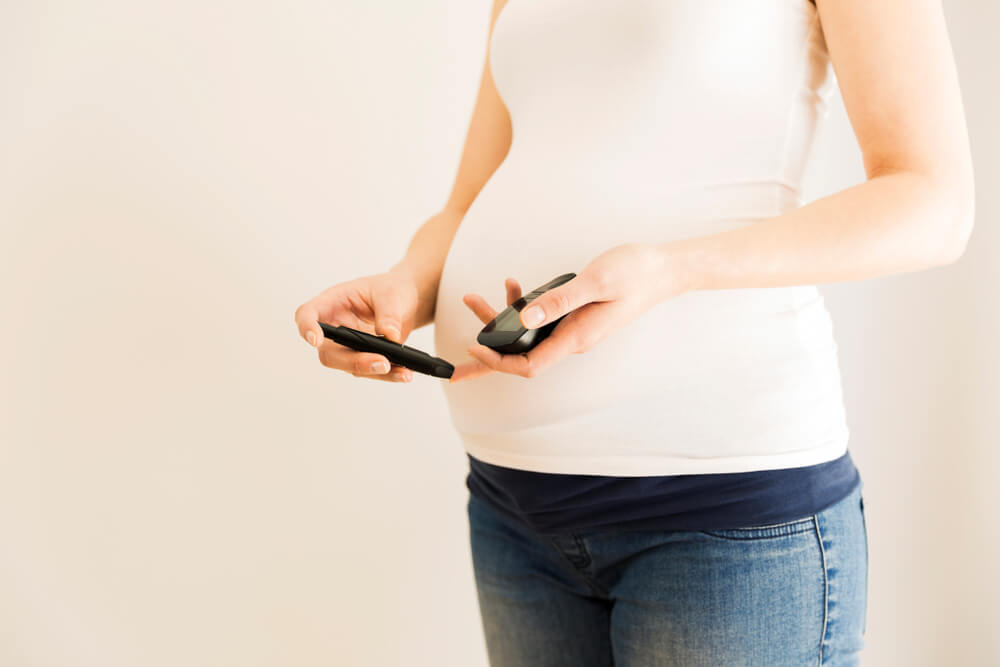Find out everything you need to know about diabetes and breastfeeding.
Women who have diabetes, or are at risk for gestational diabetes, that are considering pregnancy should first and foremost put together a team. This team is the support center for working through milestones related to diabetes during pregnancy. This team can be made up of family, endocrinologist, nutritionist, diabetes educator, doctor and if necessary an obstruction. This team will work together to help the woman in consideration reach pregnancy milestones as well as keep track of every other consideration.
Diabetes and pregnancy can be challenging but if it is approached in the correct manner with proper planning, everything can go smoothly. Continue reading to learn about tips related to diabetes during pregnancy as well as gestational diabetes.
Click here to discover ways to combat postpartum depression.
What is Gestational Diabetes?
Gestational diabetes is a type of diabetes that develops during pregnancy, affecting how the body converts sugar into energy. Gestational diabetes is something that can cause high blood sugar during pregnancy leading to health risks for the pregnancy and the baby’s health. Mothers who are expecting can control this type of diabetes during pregnancy by watching their diet, exercising and if prescribed by a doctor, medicine. Keeping blood sugar levels under control can help provide an easier birth and keep the baby healthy.
The positive side of gestational diabetes is that blood sugar normally returns to regular levels after delivery. The negative side to gestational diabetes is that if you develop it during pregnancy, you are then put at a higher risk of developing type 2 diabetes later in life. The risks related to diabetes and pregnancy can be managed if it is correctly diagnosed and treated.
Diabetes during Pregnancy
Here is our list of things to know about diabetes during pregnancy:
- Women who have type 1 diabetes should reach a healthy level of blood sugar before conception for both the mother and the baby’s health.
- The target range of blood sugar levels for a woman with type 1 diabetes should be 80 to 110 mg/dl before eating and 100 to 155 mg/dl one to two hours after eating. This should be the target range up to six months before conception.
- During pregnancy, a woman with type 1 diabetes should aim to keep the blood sugar range between 60 and 99 mg/dl before eating and 100 to 129 mg/dl one to two hours after eating.
- Keeping blood sugar levels within target ranges will help lower the risk of large amounts of sugar being passed down to the baby.
- When there is too much sugar in the bloodstream the baby can grow too large and possibly cause harm to the organs
- Using a CGM (continuous glucose monitor) can help monitor blood sugar levels during pregnancy.
- Having open communication with the doctor is important for the health of both the mother and the baby.
- Getting extra tests during pregnancy can help rule out complications along the way.
- Fetal monitoring sessions may be used to watch the baby’s movement and ensure the right time for delivery.
- Type 1 diabetes and pregnancy can mean there is a risk for early delivery and this is monitored closely.
- Early delivery can mean complications but this is all addressed with the doctor during pregnancy.
- Creating a birth plan when having diabetes during pregnancy can help keep both mother and baby healthy during birth.
- Preeclampsia is another risk for mothers who are diabetics which means that blood pressure levels are too high and the baby must be delivered early to lower the blood pressure of the mother.
Click here for more information on type 1 diabetes and pregnancy.
At the end of the day, working together with a well-equipped team before and during pregnancy can help an expectant mother be in the best condition before pregnancy and following through with keeping that condition up during pregnancy.


